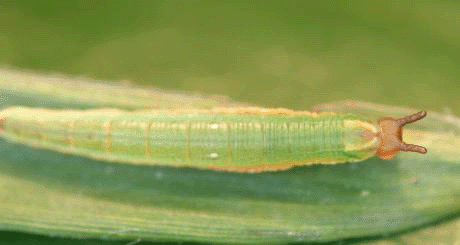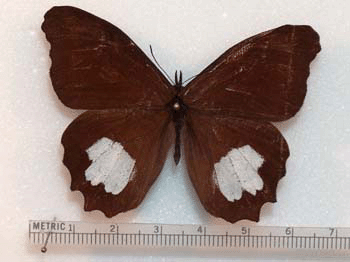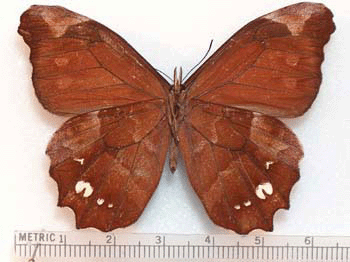Mygona irmina (Doubleday, 1849) |
Nymphalidae (Satyrinae) |
|
|

Larva
|
|
Fifth instars are very distinct among other Chusquea-feeding caterpillars in our area. Their heads are dark brown to black and have well developed but rounded and curved scoli. The shape of their body is slightly flattened (trapezoidal in cross-section) and widest at A2. Immediately after molting to fifth instar, larvae are various shades of brown, green, and pale blue dorsally and dorsolaterally and with shades of white and pink spiracularly to ventrolaterally. Recently molted larvae have the white spots subdorsally on A2-A4 very prominent but fading with age. Over the course of 12-24 h larvae become darker overall, with blue areas becoming more distinct, especially on the supraspiracles on A1-3. The dorsum of mid-stadium larvae is marked with light brown markngs that form pairs of thin, broken lines subdorsally to A4 or A5 and a mid-dorsal line from T3-A7 or A8. Late in stadium, near pupation, body ground color becomes predominantly brown with dark brown areas forming distinct dorsal chevrons highlighted with small green flecking. |
|
|
CAPEA Publications Greeney, H. F., L. A. Dyer, & T. W. Pyrcz. 2011. First description of the early stage biology for the genus Mygona: the natural history of Mygona irmina Doubleday, 1849 in eastern Ecuador. 11 pp. Journal of Insect Science 11: 1. [download PDF] |

